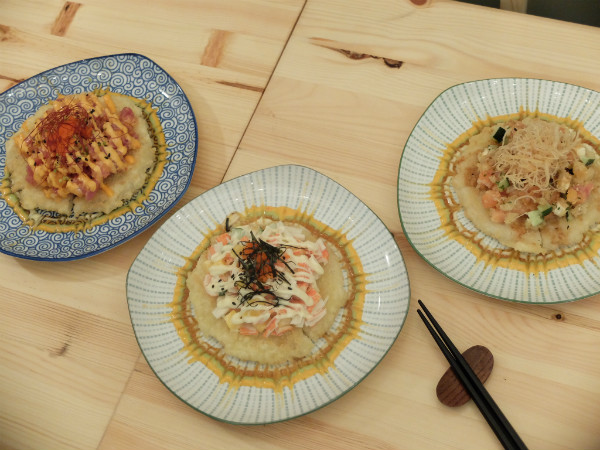COCONUTS HOT SPOT — I never thought I’d live to see sushi pizza. The fusion dish, made with crispy rice patty and topped with sushi-inspired ingredients, may not be for Japanese food purists, but I will gladly brave the Valero Street traffic jam once again to enjoy another slice — or a whole pie.
Offering Japanese comfort food that appeals to the Filipino millenial’s palate and budget, Koku is a welcome addition to the ever-growing food scene in Makati’s Salcedo Village.
This brighly-lit restaurant, with a a hip and contemporary design, offers Japanese staples like gyoza, teppanyaki and bento boxes, though it’s the more adventurous dishes that truly stand out.
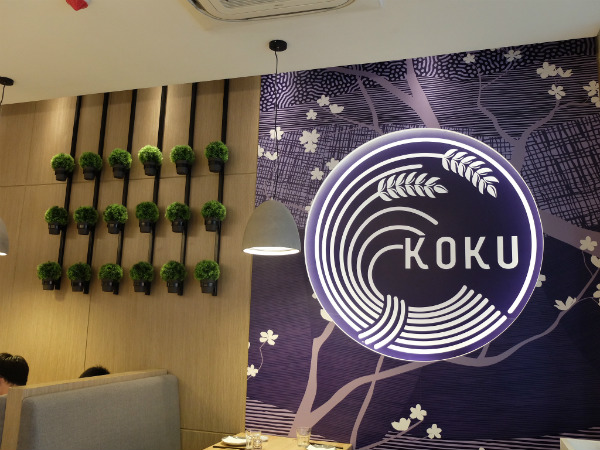
Hands-on owners Bambi and Michelle Meer are not new to the F&B universe. The power couple is behind well-loved restaurants Fireside, Kettle and Meat Plus.
When their family’s favorite Japanese resto in Subic Bay closed down, the Meers decided to open their own with a bit of help from superbly talented young chef Bruce Ricketts of Mecha Uma fame. Called Chef Samurai, it became a hit with the Subic Bay community.
Now the Meers are offering the same quality of food and service to Manila diners.
“We chose to open in Salcedo Village because we wanted to bring the community aspect of serving like what we had in Subic Bay,” said Bambi, who makes it a point to form relationhips with their diners. In Chef Samurai, he and his wife would even eat together with regular patrons.
The dishes they serve in Koku are close to their heart. The sushi pizza, for example, was inspired by a San Francisco dish that their kids asked their parents to re-create. The Japanese carbonara was a collaboration between Bambi and his mother. The restaurant is clearly a product of family effort.
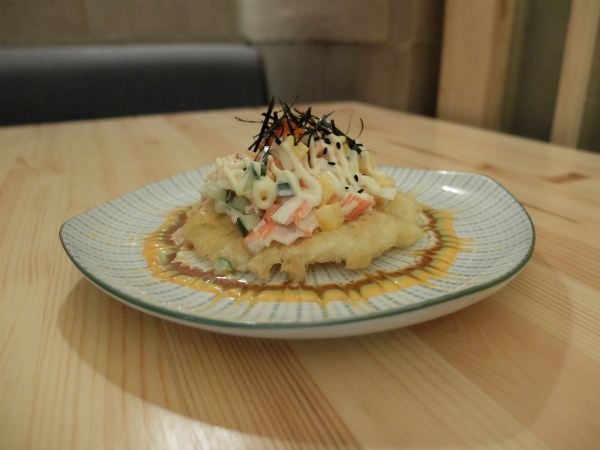
“Koku is a Japanese unit of measure for rice. It’s traditionally meant to measure enough rice for one person for one year, about 150 kilograms. What it stands for is abundance,” said Michelle.
The servings in Koku are a bit bigger than your usual Japanese portion, so a roll or two is enough to satisfy.
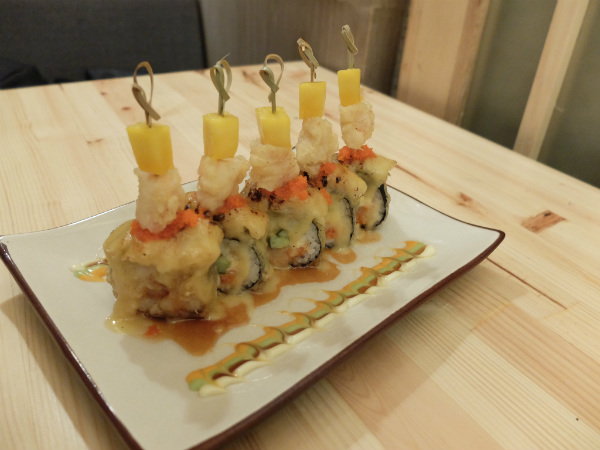
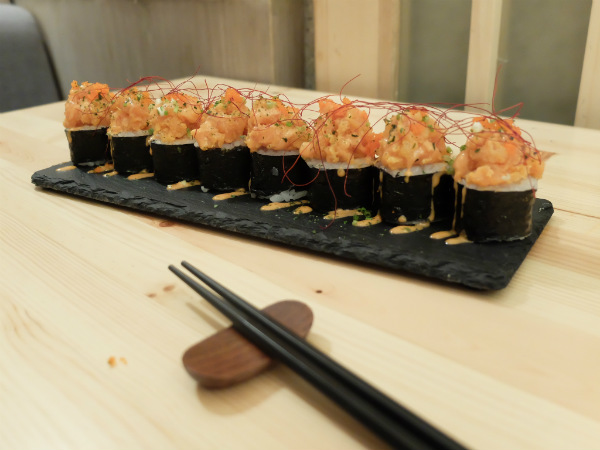
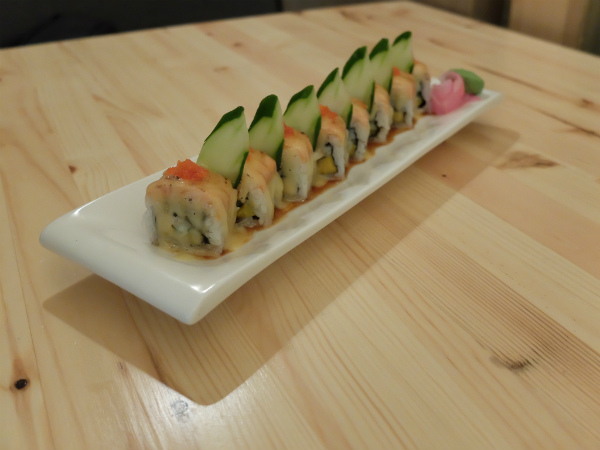
Though the Koku menu was conceptualized with the Filipino palate in mind, Japanese ingredients and techniques are still very much present in the dishes.
The Japanese carbonara, for example, is generously topped with fried wakame and salmon skin.
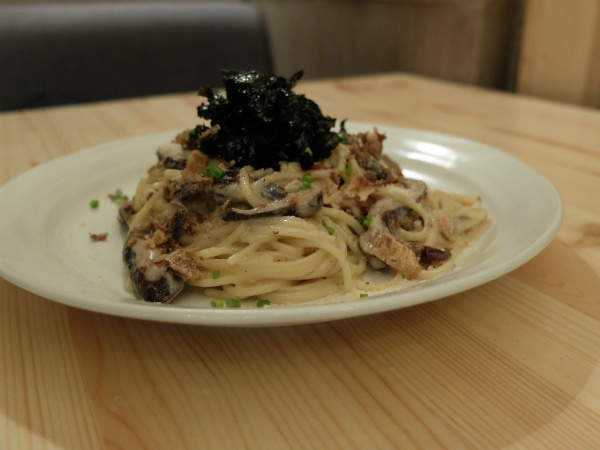
The salmon aburi sushi uses a popular Japanese technique of torching.
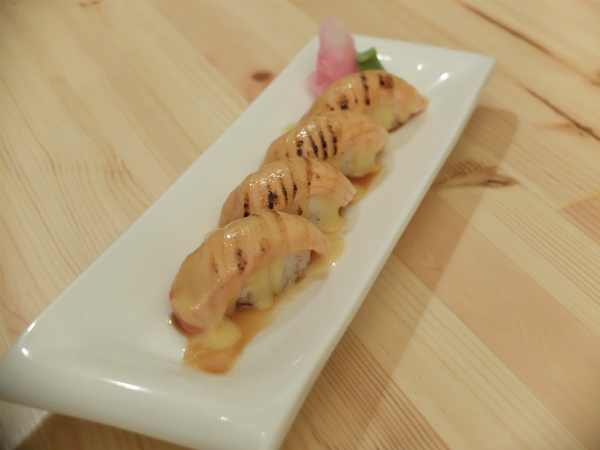
The salmon belly skewers has undeniable Japanese influence. It is served with Ponzu sauce, a soy sauce with citrus flavors.
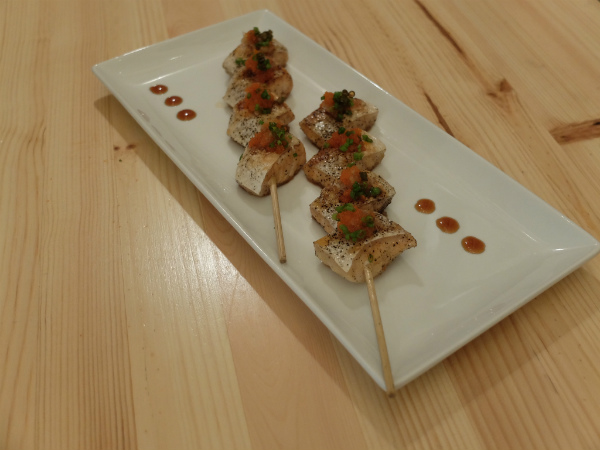
Bambi said that one of their signature dishes is the oyster papaya.
It may sounds weird, but the combination of Japanese oysters, thinly sliced semi-ripe papaya and a yummy sweet sauce is a surprising combination that will delight your tastebuds.
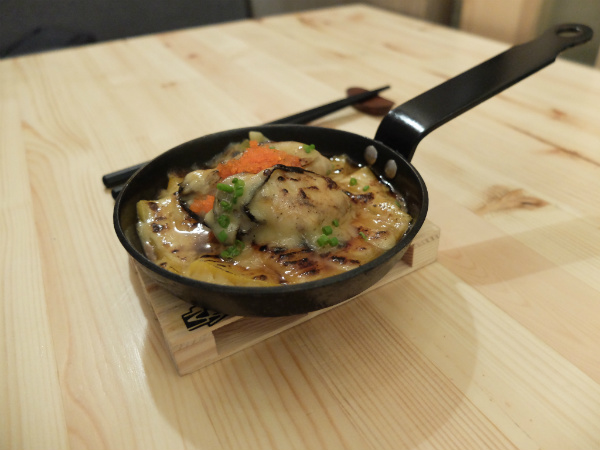
With all these interesting dishes, it’s easy to miss the drinks, but they can be found on the last page of the menu.
For a relaxing night after work, Koku has a good selection of sake. I can imagine that it would be a rewarding way to celebrate the end of the week by drinking a cup with an order of their rolls.
Bambi and Michelle make it a point to listen to what their customers have to say, so we’ll probably see the menu evolve in the next few months. In the near future, they’re hoping to arrange options for delivery.
Does that mean I can get my hands on sushi pizza without leaving Quezon City?
Koku, G/F Two Central, 109 Valero St, Salcedo Village, Makati City; +63 2 6255197; www.facebook.com/kokuph. Daily 11am-10pm.
